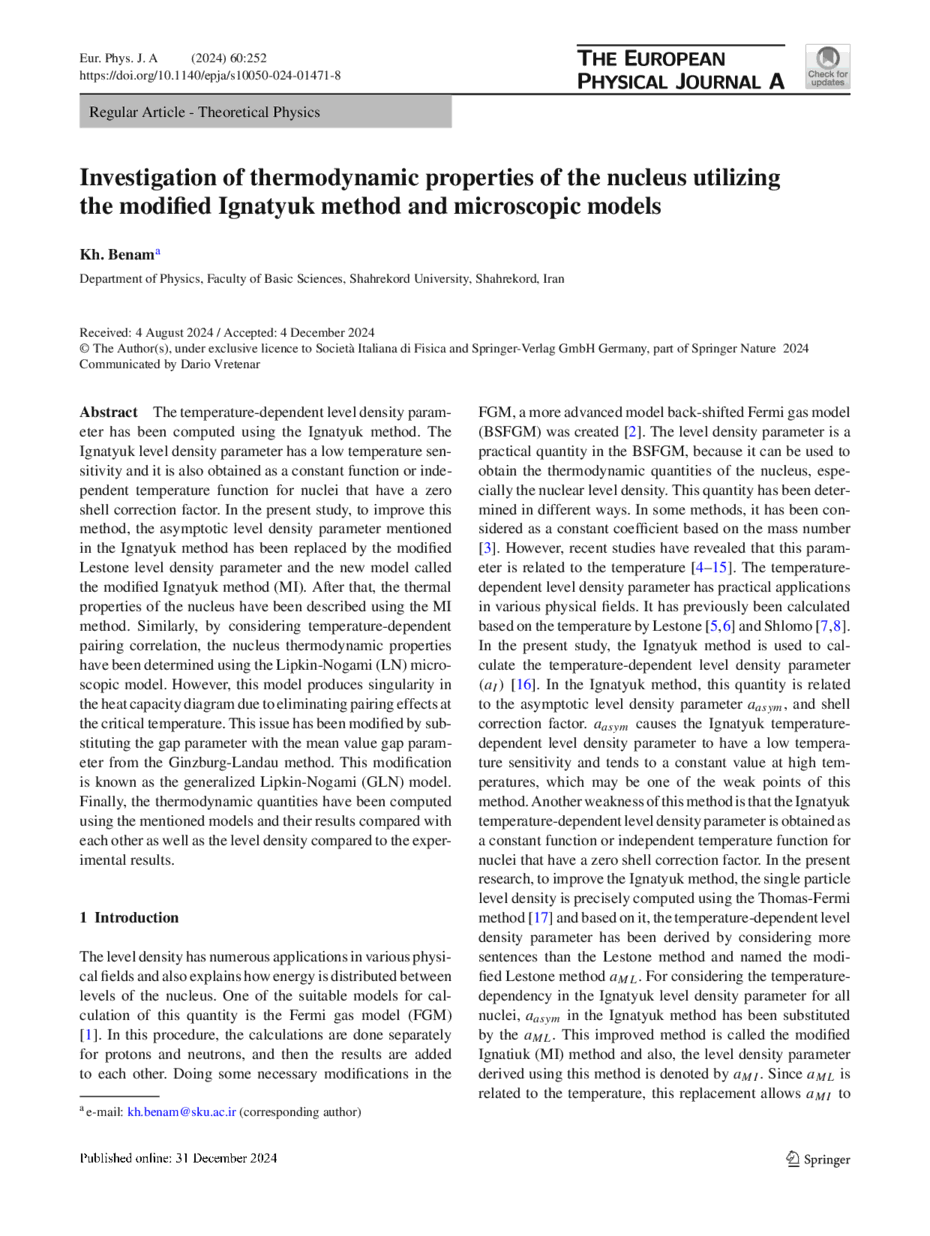https://doi.org/10.1140/epja/s10050-024-01471-8
Regular Article - Theoretical Physics
Investigation of thermodynamic properties of the nucleus utilizing the modified Ignatyuk method and microscopic models
Department of Physics, Faculty of Basic Sciences, Shahrekord University, Shahrekord, Iran
Received:
4
August
2024
Accepted:
4
December
2024
Published online:
31
December
2024
The temperature-dependent level density parameter has been computed using the Ignatyuk method. The Ignatyuk level density parameter has a low temperature sensitivity and it is also obtained as a constant function or independent temperature function for nuclei that have a zero shell correction factor. In the present study, to improve this method, the asymptotic level density parameter mentioned in the Ignatyuk method has been replaced by the modified Lestone level density parameter and the new model called the modified Ignatyuk method (MI). After that, the thermal properties of the nucleus have been described using the MI method. Similarly, by considering temperature-dependent pairing correlation, the nucleus thermodynamic properties have been determined using the Lipkin-Nogami (LN) microscopic model. However, this model produces singularity in the heat capacity diagram due to eliminating pairing effects at the critical temperature. This issue has been modified by substituting the gap parameter with the mean value gap parameter from the Ginzburg-Landau method. This modification is known as the generalized Lipkin-Nogami (GLN) model. Finally, the thermodynamic quantities have been computed using the mentioned models and their results compared with each other as well as the level density compared to the experimental results.
Copyright comment Springer Nature or its licensor (e.g. a society or other partner) holds exclusive rights to this article under a publishing agreement with the author(s) or other rightsholder(s); author self-archiving of the accepted manuscript version of this article is solely governed by the terms of such publishing agreement and applicable law.
© The Author(s), under exclusive licence to Società Italiana di Fisica and Springer-Verlag GmbH Germany, part of Springer Nature 2024
Springer Nature or its licensor (e.g. a society or other partner) holds exclusive rights to this article under a publishing agreement with the author(s) or other rightsholder(s); author self-archiving of the accepted manuscript version of this article is solely governed by the terms of such publishing agreement and applicable law.






